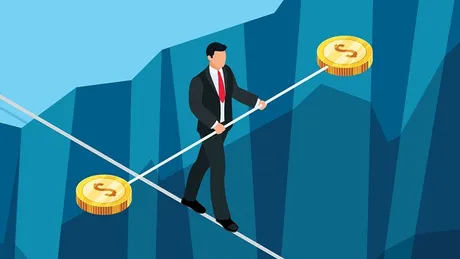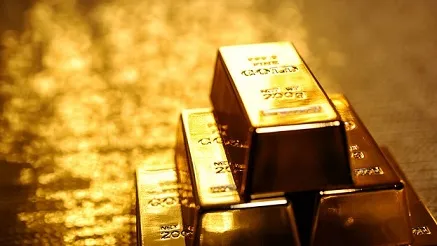
What is a stable coin?
Essentially these days a stable coin is simply a centralized crypto that is backed by USD in a bank or algorithmically using a volatile asset. Both of these implementations are comically flawed. I knew this the second I jumped on the scene back in 2017. Check out this post. Dec 23, 2017: The Blockchain is Backed by This. It was obvious to me the second I started doing research on crypto. Blockchain can only be backed by one thing: trust. Of course a subset of that trust is also the utility that blockchain provides and the infrastructure available to the users.
I've already explained many times why attempting to back a crypto with collateral is a fool's errand. However, most of the times I've done this I use gold as an example, because that is the most obvious example of all time. Trying to back a crypto with a PHYSICAL asset is a thousand times dumber than trying to back crypto with another digital asset (money in a bank or volatile crypto). That's because backing crypto with another asset adds a huge attack vector. If you back crypto with gold... who secures the gold? Who distributes the gold? It's inherently centralized garbage that isn't going to work. A crypto backed by gold is ironically worthless in the long term.

Do I have a blindspot?
I like HBD. Is that a mistake? HBD is a crypto backed by Hive and the conversion mechanism. I can easily pull off some mental gymnastics and explain this away by saying HBD is actually backed by trust. That trust is derived from the witnesses (oracles) and the price feed and the conversion mechanisms in place. HBD has guaranteed baseline value due to these conversions. It obviously wouldn't hurt to have more dapps and usecases for it besides 20% yield.
Is 20% yield unsustainable?
No, the yield allocated to a stable coin has nothing to do with its sustainability. I think this is a concept that most people seem to not understand. UST didn't crash to zero because it was offering 20% yields. UST crashed to zero because holding UST was the same as going long on LUNA. What we witnessed was the ultimate long squeeze that crashed both tokens to zero due to the debt being owed back being too high.
It is the debt ratio that is unsustainable.
Before LUNA crashed it had a debt ratio of something insane like 50%. The market cap of LUNA was only twice as big as the market cap of UST. That would be fine if LUNA itself was a stable coin, but LUNA was a volatile asset with thin liquidity. It only took a single day for the debt ratio to spiral out of control to 500% (x5 bigger UST market cap over LUNA).
HBD has a haircut in place that caps the debt ratio at 10%. We are also talking about increasing that cap to around 20% or 30%, which would also be fine. As long as we don't get into a situation where the debt is impossible to pay back, we're good.

But the future of stables?
This is another thing that most people in crypto just don't seem to understand. The future of stablecoins is that crypto itself will be the stable coin. People say Bitcoin will stop being volatile when its market cap supersedes all nations. That is incorrect. Obviously a deflationary asset will never be stable. That's an absurd notion. Stability requires elasticity, and Bitcoin has none. Rather, it falls to DEFI to pick up the slack.
The only way to make a stable asset is to manipulate supply, demand, and utility in such a way that the value of the asset goes down when it's being overheld, and the value goes up when it's oversold. Not a single crypto is even attempting such a thing right now, which I find mindblowing because mitigating that volatility is one of the biggest issues in crypto.
The customer is always right.
And what is the customer telling us? They are saying that they don't like volatility. Why are half of the top six coins by market cap stable coins? Because people don't like volatility. The market is telling us what it wants but no one is actually providing that service... instead opting to simply piggy back off of USD. Kind of mindblowing if you ask me, but it is what it is.
I believe the reason behind this circumstance is clear: everyone wants number to go up but nobody wants number to come down. In order to make a stable asset, number needs to come down on purpose by design, and no one wants to build that token, instead opting to run a casino where the early adopters get filthy rich on top of the backs of new users who might have to suffer for 4 years before they're able to profit from the next wave of new users. And we wonder why the skeptics call it a pyramid scheme.

Time in the market
The ultimate goal for every crypto should be to provide a stable asset that allocates predictable yields for its users. Ironically this is a self-defeating premise without the proper incentives in play. Without incentives, a highly valuable stablish crypto with high yields is going to get pumped by VCs, making it not stable. I've proposed some ideas about how to mitigate these problems (removing high yields when token spikes), but it's all untested game-theory at this point. Very much a put up or shut up situation.
Conclusion
The future of Stable Coins... is crypto. The future of everything is crypto. From automated market making liquidity provision to community to governance. This concept that USD is always going to be more stable than crypto no matter what is a foolish notion.
Eventually USD will begin to destabilize, and when it does the powers that shouldn't be are going to pivot to crypto as well in the form of CBDC. It won't be hard for crypto to become more stable then USD when USD is destabilizing. Truly the future of humanity itself is sacrificing efficiency to gain trust. A completely new era is upon us. We just have to whether out this impending shitstorm to get there.
Return from The Future of Stable Coins to edicted's Web3 Blog
